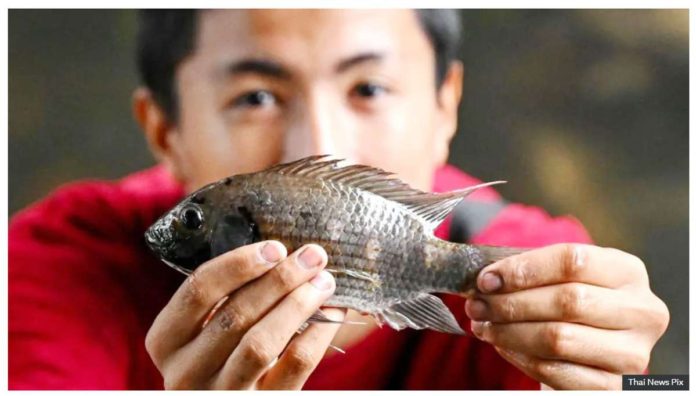
BANGKOK – Can Thailand win its war against an invasive tilapia species?
It has been described as the “most invasive species” to ever hit Thailand – one which risks enormous damage to the environment, according to officials.
Attempts to control it have seen crowds wading out into lakes, and genetic modification.
And yet the blackchin tilapia continues to spread through Thailand’s waterways, so far impacting 17 provinces.
An investigation in parliament has aimed to uncover the cause and its proponent, with Bangkok MP Nattacha Boonchaiinsawat declaring: “We will not pass a devastated ecosystem to the next generation.”
So can Thai authorities win the battle – and how exactly did this West African fish end up causing havoc half a world away?
Battling an alien species
Thailand had experienced outbreaks of blackchin tilapia in the past, but none has been as widespread as this most recent episode.
Nattacha estimates that this particular outbreak is going to cost Thai economy at least 10 billion baht.
The core problem is that the blackchin tilapia prey on small fish, shrimp, and snail larvae, which are among Thailand’s important aquaculture products.
So for months now, the government has encouraged people to catch blackchin tilapia, which have found their way in rivers and swamps. The fish thrive in brackish water, but can also survive in fresh and salt water.
The Thai government has also doubled the amount that it will pay people who catch the fish, to 15 baht per kilogram. The result? In Bangkok’s suburbs, crowds have waded in knee-deep waters hoping to catch blackchin tilapia with their plastic basins.
Authorities have also released the blackchin tilapia’s predators – Asian seabass and long-whiskered catfish – to hunt them down.
However, they are battling a species which reproduces at speed: females are able to produce 500 fingerlings at a time.
And so authorities have also gone to the extent of developing genetically-modified blackchin tilapia that would produce sterile offspring, planning to release them as early as the end of this year, in the hopes of stopping their population from exploding further.
But Nattacha told BBC Thai the government needed to do even more.
“Who will win?” he wondered. “We need the people to follow the case closely, otherwise this matter will be quiet, and we will pass on this kind of environment to the next generation.”
The Thai government has offered to buy blackchin tilapia to encourage the public to catch them
So how exactly did this fish – easily identifiable thanks to the black spots on their chins and cheeks – come to be in Thailand?
One theory that parliament has looked into is that an experiment by a food behemoth 14 years ago had caused the spread.
The company, which produces animal feed and runs shrimp and livestock farms, imported 2,000 from Ghana in late 2010. It said all the fish died and were buried properly.
Two years later, outbreaks of blackchin tilapia were reported in Thailand.
Another theory is that the invasive fish species could have been smuggled into Thailand. (BBC)







